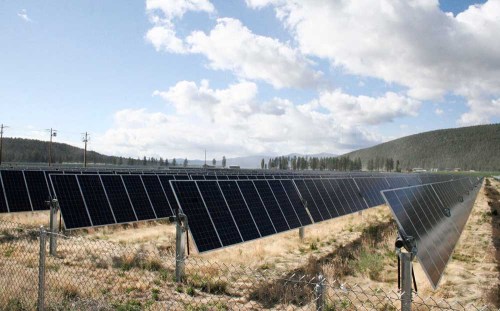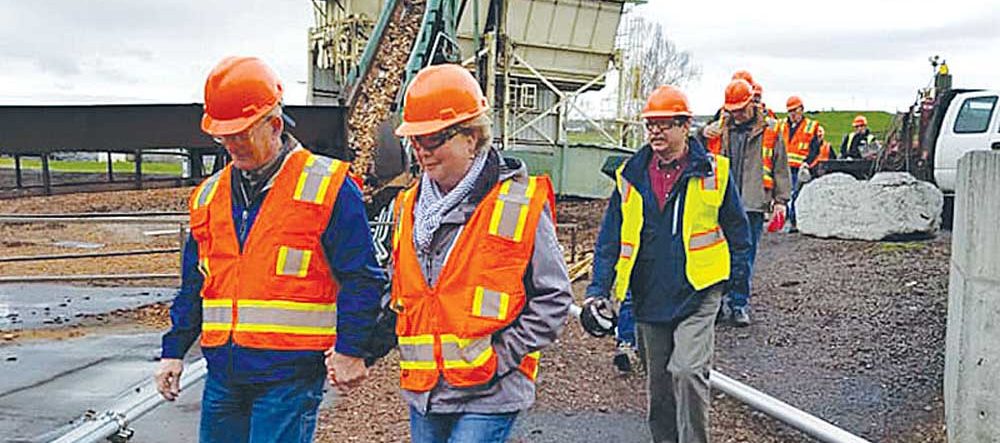County authority over Oregon solar projects gains ground
Published 3:45 pm Friday, April 21, 2023

- A solar developer in Idaho has agreed to pay $416,500 to settle water pollution allegations with the federal government.
SALEM — County governments could approve solar farms up to 3,840 acres under legislation that’s gaining ground in Oregon, potentially doubling the size of projects under local jurisdiction.
Under current law, solar projects bigger than 1,920 acres come under a state siting process that some energy developers consider too complicated and time-consuming, particularly in light of Oregon’s renewable energy push.
“We are not producing as much solar energy as we want or we need,” said Rep. Ken Helm, D-Beaverton, chief sponsor of House Bill 3179.
The proposal would give counties authority over projects twice as large on land with the lowest agricultural value, raising the threshold from 1,920 acres to 3,840 acres.
County jurisdiction would also steeply increase over solar projects on high-value farmland, from 160 acres to 240 acres, and on other arable soils, from 1,280 acres to 2,560 acres.
The bill passed the House, 56-2, this week and is in the Senate Energy and Environment Committee.
Solar developers would be able to seek approval from the state Energy Facility Siting Council, but those who prefer to work with counties would still be subject to the same standards for farm, forest and wildlife habitat protection, Helm said.
A land use rule that limits solar facilities to 12 acres on high value farmland in the Willamette Valley would be unaffected by HB 3179, he said.
“We are continuing to build on a proposal that has shown success,” Helm said, referring to legislation passed four years ago that initially expanded county authority over solar projects.
In 2019, lawmakers decided to raise the maximum size of solar projects under county control from 320 acres to 1,920 acres, despite objections from the Oregon Farm Bureau and the 1,000 Friends of Oregon farmland preservation group.
At the time, the organizations feared the change would encourage “jurisdiction shopping” among developers looking for quick approvals, weakening regulatory scrutiny of the impacts solar facilities have on agriculture.
During this year’s legislative session, neither group has raised objections to HB 3179, as they’ve instead focused on other bills meant to improve the state’s renewable energy strategy.
1,000 Friends of Oregon hasn’t taken a position on the bill while negotiating “a siting process that is more streamlined and certain, aimed at lower conflict areas, and integrates the concerns and needs of many interests,” said Mary Kyle McCurdy, the group’s deputy director.
The Oregon Farm Bureau opposed a similar bill that would have opened up “far too much” farmland to solar projects but considers HB 3179 a “compromise to allow some increased solar development,” said Lauren Poor, the group’s vice president of government and legal affairs.
From the perspectives of the solar industry, extending county authority to larger-scale projects has sped up the siting process.
“Because it’s been successful, we’d like to expand on that success and increase the project size even further,” said Angela Crowley-Koch, executive director of the Oregon Solar + Storage Industries Association.
Aside from enlarging the size of solar facilities under local control, HB 3179 would provide developers with more flexibility in compensating for wildlife impacts, she said.
“We’ve run up against some rigidity in the system that we think could be changed to allow more options and better options for mitigation,” Crowley-Koch said.
The bill would exempt solar projects proposed for federal land from the EFSC process, since they’re already covered by the National Environmental Policy Act, said Max Yoklic, attorney for developer NewSun Energy.
That federal law requires agencies to take a “hard look” at the effects of such proposals, which are reviewable in court.
“The NEPA process these projects undergo is tremendously difficult, long, and there’s input from local and state agencies,” Yoklic said. “That seems like a simple way to ensure there are not duplicative permitting efforts.”
These provisions have come under fire from hunters and wildlife advocates, who claim the bill undermines mitigation standards established in 2019.
Opponents have pointed to comments from the Oregon Department of Fish and Wildlife, which is ostensibly neutral on HB 3179 but said it “would reduce species and habitat protections.”
The agency accuses the bill of “introducing undefined criteria” and “removing accountability” for mitigating wildlife impacts while “abdicating the state’s authority” over projects on federal lands.
“It doesn’t make us feel really good about the bill as it relates to mitigation and the assurance of mitigation,” said Dave Wiley, representative of the Rocky Mountain Elk Foundation.








